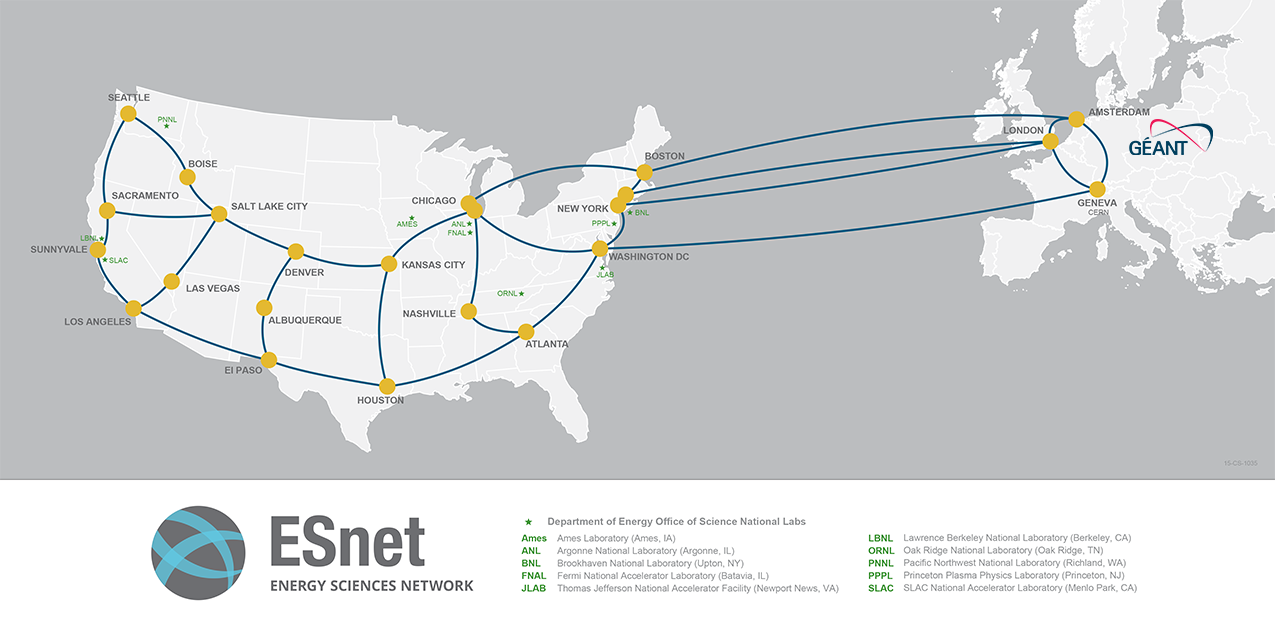Words: Linda Vu, ESnet
When the Large Hadron Collider (LHC) at CERN came online in 2008, researchers around the world were on a quest to find and measure the properties of the elusive Higgs Boson — the particle that gives all other particles their mass — and answer other unresolved questions in particle physics. Along the way, the LHC produced about 90 petabytes of data per year — equivalent to about 1,197 years of HDTV video annually.
The Higgs particle was discovered in 2012, and now scientists around the globe are setting their sights to fall 2027 when the Hi-Luminosity LHC comes online. The upgraded facility will produce significantly more collisions than its predecessor, allowing researchers to detect extremely rare phenomena and improve the precision of measurements of the infinitesimally small. Throughout its operation, the Hi-Luminosity LHC will also produce 10 times more data than its forerunner, the LHC.
To ensure that this data reaches scientists around the world promptly, the U.S. Department of Energy’s Energy Sciences Network (ESnet) and GÉANT, Europe’s leading collaboration on e-infrastructure and services for research and education, recently teamed up to increase the capacity of ESnet’s network loop in Western Europe to 200 Gigabits per second (Gbps). This upgraded network connects to ESnet’s 400 Gbps transatlantic network capacity, allowing researchers on both continents to collaborate at the speed of science.
“This upgrade to 200G is an important milestone for ESnet because it opens up more bandwidth, network reliability, and flexibility at a time when the demands from high energy physics experiments and other scientific instruments are rapidly increasing,” said Chris Cummings, a network engineer at ESnet.
Cummings notes that this milestone also allows ESnet engineers to do maintenance and upgrades with less overall impact to the network. This is especially important as ESnet rolls out its next-generation ESnet6 network architecture in Europe in 2023.
“ESnet6 is increasing the amount of data that we can transfer across our network and then, around the world. In its simplest terms: we are increasing the size of the ‘pipes’ carrying the data to accommodate the growing data sets being generated by scientific instruments and experiments across the globe. That, and the need for innovative network technologies to route the data, is what’s driving Research & Education networks to upgrade,” said Kate Mace, ESnet6 Project Director.
“The decades-old collaboration between global R&E networks like ESnet and GÉANT is highly valuable because we share the common goal of making science successful and supporting the needs of global research,” said GÉANT’s Tom Fryer, Head of International Relations. “This common goal only grows more important as scientific discovery increasingly relies on global collaboration.”
Learn more about ESnet6.
Learn more about GÉANT’s new network.






